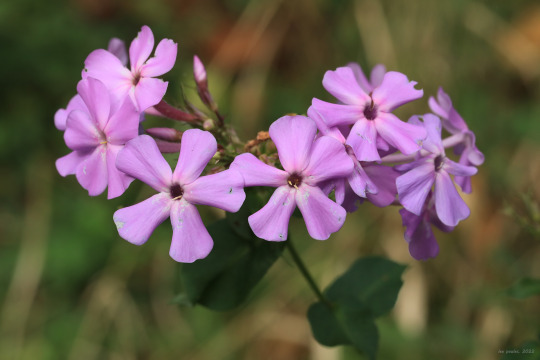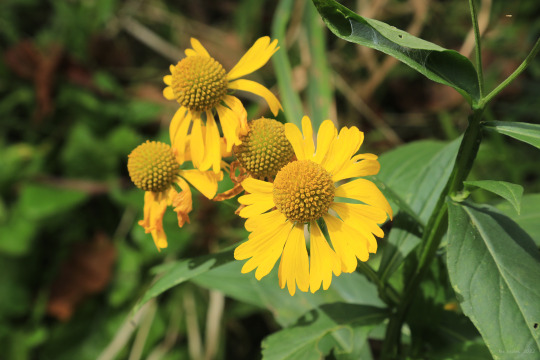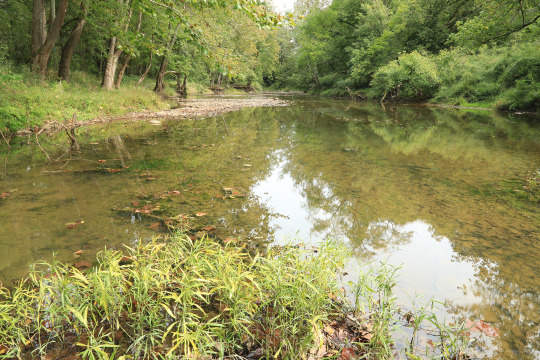#solidago shortii
Explore tagged Tumblr posts
Text

My golden locks are fit for a fairy tale... and my prince—the soldier beetle. 😍
Short's Goldenrod (Solidago shortii)
Endemic to two small areas of Indiana and Kentucky
Status: federally Endangered
become a member on ko-fi || newsletter
#wildflower#goldenrod#flower#plant#plant art#botanical art#endangered plants#north america#usa#indiana#kentucky
20 notes
·
View notes
Photo




Ohio River Valley was known for extreme diversity in it’s early years before honeysuckle, winter creeper, winged burning bush, and kudzu were promoted by the early horticultural horrors of the European settlers. Widening of the river and promotion of power plants, mills, and locks meant many of the natural features would be gone forever. Limestone Glades/ barrens of the Ohio River Valley on the Indiana and Kentucky side, found as vestigial remnants housed in state parks are the last refugial locations for native populations of this species of Goldenrod.
Short’s Goldenrod,
Solidago shortii,
many of you are familiar with long seasonal much larger CV. called ‘Golden Cascade’ that is still around today from the early “poach that sport ol’ chap” era of the early 1900′s where many species were locally extirpated from counties.
Because of it’s past history, it’s lack of habitat, the distance between populations, the lack of genetic vigor, and the population sizes them selves. It has been put on the Federally Threatened species list along with a few other Solidago sp. that you may have seen on this blog( White haired GR, Blue Ridge GR).
It is named after Dr. Charles Wilkins Short whom’st’ve first discovered this plant in 1840 growing on a limestone outcrop called Rock Island within the Falls of the Ohio River(RIP) near Louisville, Kentucky. Plants at this original site disappeared in the early 1900s, at least in part because dam construction on the Ohio River destroyed the habitat. The only know populations of this goldenrod today are the Blue Lick Springs area of northeastern Kentucky (14 populations in Fleming, Nicholas and Robertson Counties) and along the Blue River in Harrison-Crawford State Forest in southern Indiana (1 population) and a population near Clifty Falls State Park( 1 Population aka this one).
#solidago shortii#solidago#asteraceae#botany#plantblr#plants#plantblog#plant blog#nature#ecology#wildflowers#indiana#cottagecore
27 notes
·
View notes
Photo









Early fall color along Dunkard Creek at the Mason-Dixon Historical Park. Most notably, broadleaved goldenrod (Solidago flexicaulis), also known as zig-zag goldenrod, is now in bloom. This is one of my favorite wildflowers of any season - it grows in gorgeous clumps with brilliant gold flower spikes and broadly-ovate, sharply serrated foliage. It’s better behaved than most goldenrods and is ideal for a bright pop of autumn color in a native wildflower garden.
From top: broadleaved goldenrod, one of two species in this area with flowers growing from the leaf axils; blue wood aster (Symphyotrichum cordifolium), a common woodland aster that blooms right up to the first frost; garden phlox (Phlox paniculata), also known as tall phlox and fall phlox, a tall, wetlands-loving perennial that blooms from July through early October in Central Appalachia; sneezeweed (Helenium autumnale), which loves the marshy edges of ponds, lakes, and streams; short’s aster (Symphyotrichum shortii), a woodland aster with a special fondness for limestone bluffs.
#appalachia#vandalia#west virginia#pennsylvania#fall#autumn#dunkard creek#mason-dixon historical park#solidago flexicaulis#broadleaved goldenrod#zig-zag goldenrod#symphyotrichum cordifolium#blue wood aster#phlox paniculata#garden phlox#tall phlox#fall phlox#helenium autumnale#common sneezeweed#symphyotrichum shortii#short's aster#wildflowers#flora
56 notes
·
View notes
Photo




The Best Goldenrods for Your Garden (Part II)
Groundcovers?
I bet you have never thought to put the words Goldenrod and groundcover in the same sentence, but think again. Here are three candidates for the role.
1 & 2 Solidago sphacelata ‘Golden Fleece’. This diminutive charmer is only about 1 ft tall, but provides a mound of attractive dentate heart-shaped leaves all season (image 2) until the rich and densely flowered hook-shaped wands emerge in late August through September (image 1). At least as spellbinding as the Medusa’s stare, but not the least bit lethal. I have seen it used effectively as a sunny groundcover in a roadside planting, and what a perfect way to make use of its spreading abilities in spots where other plants might struggle.
3 Solidago shortii ‘Solar Cascade’, looking similar to Fireworks, but shorter, more diffuse, and if the nurseries are to be believed, producer of a fascinating cascade of brightest yellow streamers.
4 Solidago flexicaulis ‘Zig Zag goldenrod’. Shade lovers need not feel left out in the golden groundcover department. Named for its zig-zagging flower stalks, this one is suitable for difficult to grow spots under trees (conditions in which it thrives in my neck of the woods). A definite for a naturalized effect in the woodland garden.
7 notes
·
View notes
Photo








Licorice or Anise scented goldenrod. Unlike Anise, a member of the mint family, where the entire plant gives of the smell of licorice, the identifying smell of this species comes from the leaves of this species. A quick look at this species reveals nothing about it’s identity until crushing the leaves as it can have an Ohio goldenrod and Shorts goldenrod look to it, which may not sound like an issue to most keying but in the area that this was in, all three goldenrods could of potentially existed sympatrically. Although Shorts goldenrod, federally threatened Solidago shortii, has no record from this county, remnant sites are never out of question for a potential occurrence. HD meadow is known for many random occurrence and it would be bad to ignore that fact. Still, the taste of these leaves and the smell when crushed pointed me to the correct ID of Solidago odora.
33 notes
·
View notes